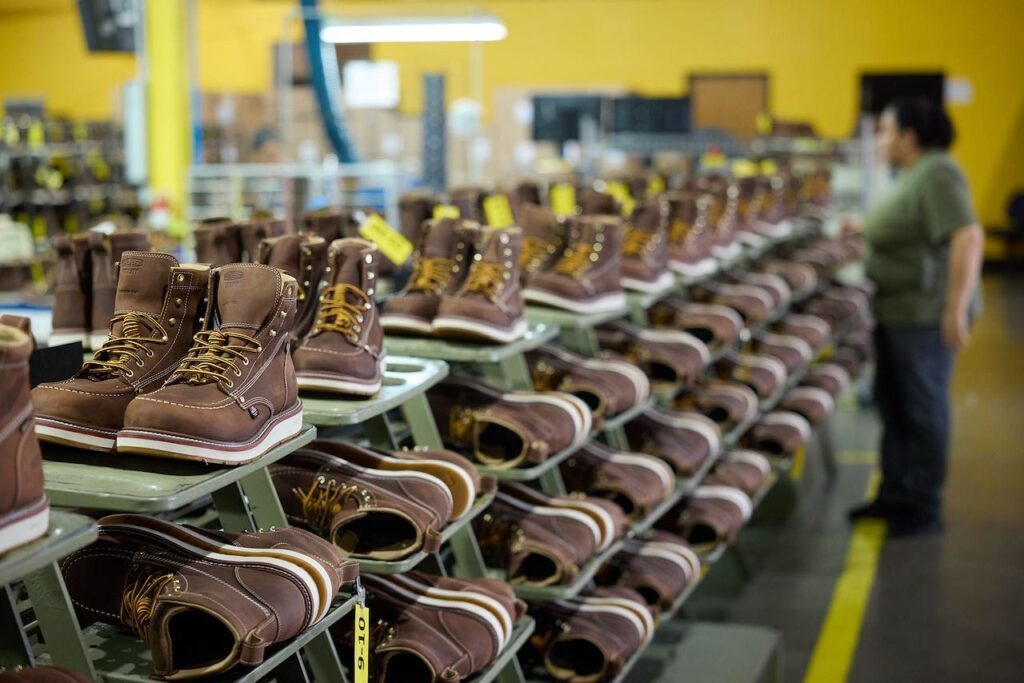First published by our sister publication Shop Eat Surf Outdoor
Outdoor footwear company Keen appears to be in an enviable position when it comes to navigating tariffs. The company has zero exposure to the 145% tariffs on Chinese-made goods (reduced to 30% temporarily on May 12) because it moved manufacturing out of China over the course of 10 years, fully exiting in 2020, due to rising labor and other costs in the country.
It has a diversified manufacturing base: Keen owns three factories in the U.S., the Dominican Republic, and Thailand that account for a third of its global production. And it has long-term, third-party contract factories in Vietnam, Cambodia, and India.
Keen is also privately held, and executives say that is another key reason why the company is able to make a call on tariff price increases that many companies are not. Keen announced this week that it is holding prices steady in 2025 despite the 10% universal tariff now in effect due to the Trump administration’s new trade policies.
Values-Led Company

Keen Chief Operating Officer Hari Perumal equated the pricing decision to how Keen handled the COVID outbreak. Then, the company told retailers if they were struggling to pay bills, they could pay Keen last.
“That kind of underscores the privately-owned, family-led, values-led company that we are,” Perumal said in an interview with SESO. “We want to take a similar position this time with so much uncertainty out there. We want to be there for our partners and fans.”
Perumal said Keen will honor that commitment to keep prices steady in 2025 even if the high reciprocal tariffs, currently on hold, kick back in. The reciprocal tariffs were steep on some of the countries that Keen imports goods from – 46% on Vietnam, 49% on Cambodia, 36% on Thailand, and 27% on India.
Perumal believes that those high tariffs will not go forward.
“These countries are on the forefront of negotiating with the administration, “ he said. “We hope it goes away. We are planning on the 10% tariff that we know for sure is in place now – all the financial models that we are running are on that 10% tariff.”
Keen’s long-term manufacturing partners, some of whom have worked with the company for 20 years, are willing to absorb some of the increased costs, and Keen is as well, Perumal said.
Keen Not Slowing Investments
SESO asked him if Keen will be forced to cut other investments or planned expenses to make up the difference.
“No, if anything we are going the other direction,” he said. “We are investing in new categories and also launching our new trail running category.”
The company is also scaling up its U.S.-based production. Manufacturing in the U.S. is not new for Keen, which opened a factory in its homebase of Portland, Oregon, in 2010. The company is moving that facility to Shepherdsville, Kentucky, to be closer to its distribution center and will begin manufacturing shoes there in June.
“We are scaling up for higher production levels,” he said. The company will make its high-end utility boots there, as well as outside performance products.
The company moved U.S. production closer to its distribution center in part to reduce its carbon footprint, Perumal said.
“We can get to 80% of the American population with ground shipping in two days,” he said.
Why Manufacture Shoes in the U.S. at All?
Given the higher costs, it’s interesting that Keen makes anything in the U.S.

“I used to ask the sales team the same question myself,” Perumal said, pointing out that labor costs alone are 10 to 12 times higher in the U.S. compared to Asian countries.
“The (Keen) head of sales always said ‘Made in America’ is important. I’ve gone on several retail tours with our sales folks and the resounding answer is yes, retailers want American built, even if (the boots) cost something like $300. If we have a (Keen) fan that wants to buy the product, and we have a retailer that wants to carry the product, why not make it in America?”
That specific product line that makes sense to make in the U.S. is Keen’s high-end, work boot division.
Potential Impact of Not Raising Prices
Another outdoor company, Columbia Sportswear, is also keeping prices steady in 2025, and executives there publicly said they believe Columbia will grab market share as a result.
Is that Keen’s goal as well?
“Our first priority is showing up to support our community when they need us, at a time of so much uncertainty,” Perumal said. “If doing the right thing earns us more loyalty, that’s something we would welcome. But our main objective is to show up for our fans and retail partners when they need us most.” Keen is not committing to keeping prices steady forever, however. Come 2026, the company will reevaluate its position based on how the tariff and cost landscape unfolds.













